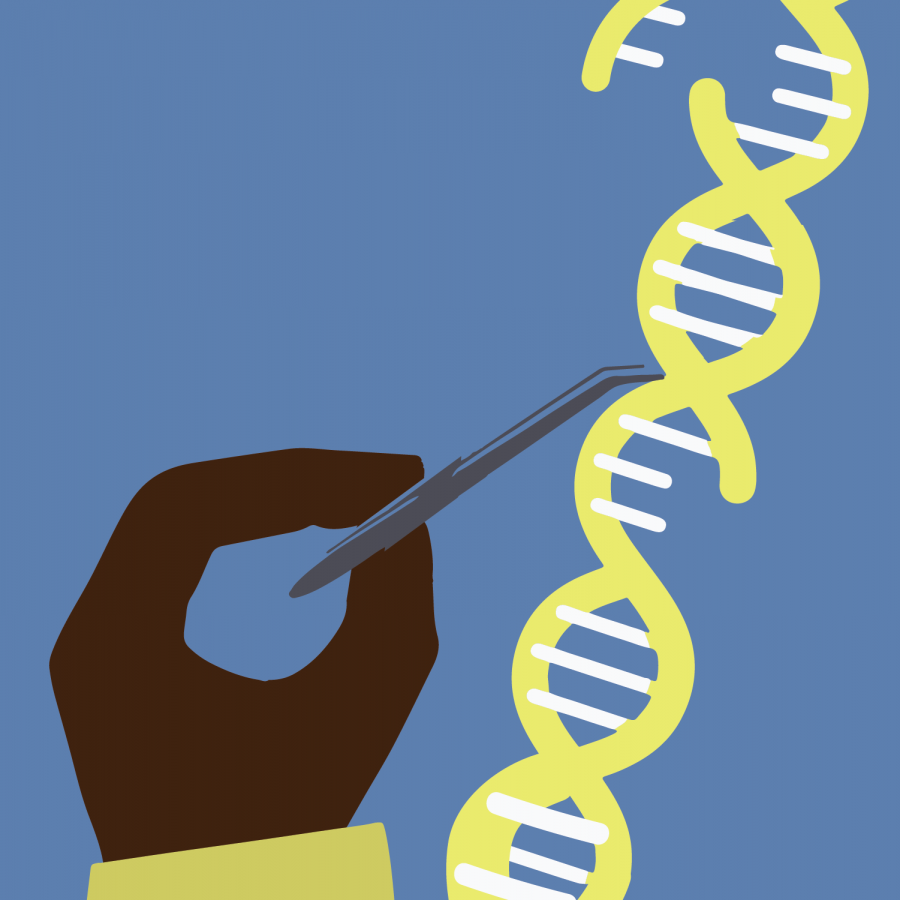A CRISPR approach to gene editing
Sep 20, 2018
here seems to be a divide between what can be changed in the world and what cannot. For much of science, broadening the horizons of knowledge involves defining and redefining this divide. For genetics, in recent years, the divide has become increasingly blurred.
Enter CRISPR-Cas9, a still-developing process that allows the genetic code of an organism to be changed. Now, after the developments of CRISPR-Cas9 have started to be distributed and researched, researchers at the University have created a new technique, called CRISPR-SKIP.
Pablo Perez-Pinera, bioengineering professor at the University, and Jun Song, physics professor, led a team of computational biologists and bioengineers to develop the CRISPR-SKIP technique.
But before getting into how CRISPR-SKIP is new, one first has to know how the original CRISPR is supposed to function.
The U.S. National Library of Medicine explains that by manipulating the RNA of cells the genome of the cell is deliberately damaged. Then, through the cell’s own mechanism for repairing damaged DNA, a new DNA sequence is put in place of the lost sequence. This allows DNA to be altered with relative accuracy, as part of the process specifies the DNA to be removed. This means rather than ad hoc gene hacking, specific parts of DNA can be snipped away, leaving room for the intended sequence to take their place.
Get The Daily Illini in your inbox!
While there are ethical concerns with the scope and applicability of the technology, it has potentially enormous application in curing human genetic diseases, such as cystic fibrosis, hemophilia and sickle cell anemia.
CRISPR might seem useful in specifying which segments of DNA should be changed and which should remain whole, but this specificity can break down. CRISPR can sometimes lead to portions of the genome that were not specifically targeted to be removed anyway. This causes parts of DNA that were not originally chosen to be removed as well, which leads to serious problems.
“Several recent reports have identified some potential problems that can arise from cutting DNA, such as losing entire fragments of chromosomes, which is potentially dangerous, since they can cause cancer and other diseases,” Perez-Pinera said. “The mechanism of action of CRISPR-SKIP does not require inducing breaks in genomic DNA, which makes it potentially safer than traditional CRISPR.”
What CRISPR-SKIP does, rather than removing the offending piece of DNA, is change a single base in the genome, rendering the offending piece as harmless. When the cell replicates, the portion of the DNA is ‘skipped’ since the piece is now read as not relevant for the purposes of producing RNA.
RNA, which allows for the DNA to be read and used, does not read these ‘CRISPR-SKIP’ed portions of the DNA, leading for a much safer, more comprehensive solution than what CRISPR offers.
This can also provide a longer-lasting effect than other genomic ‘skipping’ technologies that attempt to mitigate genetic disease by marking genes as not for reading.
Professors Perez-Pinera and Song explained while the FDA has even approved some ‘skipping’-based drugs for use in humans, however, these drugs generally do not produce results consistently and permanently, whereas CRISPR-SKIP can potentially result in long-term relief via wholesale genetic change.
“From the very moment that we conceived this idea, we realized the significance and potential of this technology, so the entire team worked exceptionally hard to achieve our common goals,” Perez-Pineda said. “As team leaders, we provided technical advice to our students, helped analyze the data and interpret results, prepared the manuscript as well as offered guidance concerning the overall direction of the project.”
However, scientific progress should not be rushed, and more testing is required before CRISPR-SKIP can see widespread use.
“At this moment, the next steps include identifying appropriate delivery vehicles with which to test this technique in animal models as well as testing its safety and efficacy,” Song said.
As testing continues, this technique represents a new wave of advancements that are potentially world-changing. The advancement of techniques aimed at manipulating and ultimately resolving genetic anomalies continues to stretch the boundaries of what can and cannot be solved.
With the collaborative effort of researchers at the University, that boundary has just been pushed to a safer, more consistent method for altering genes.






